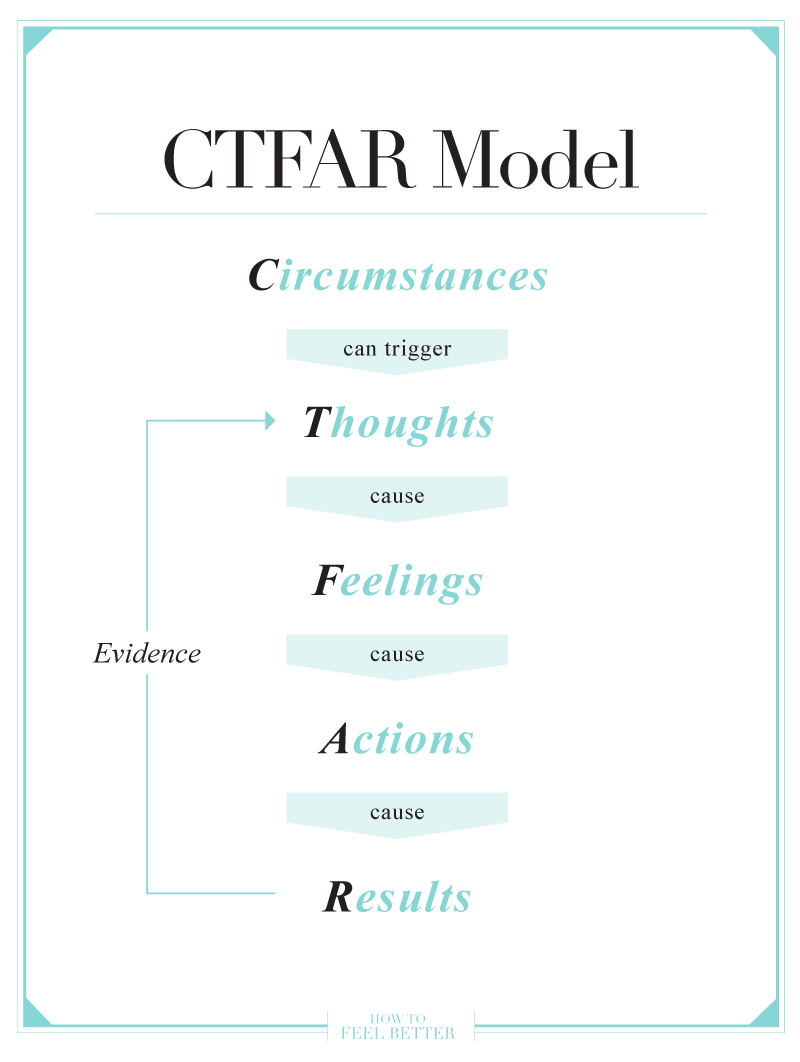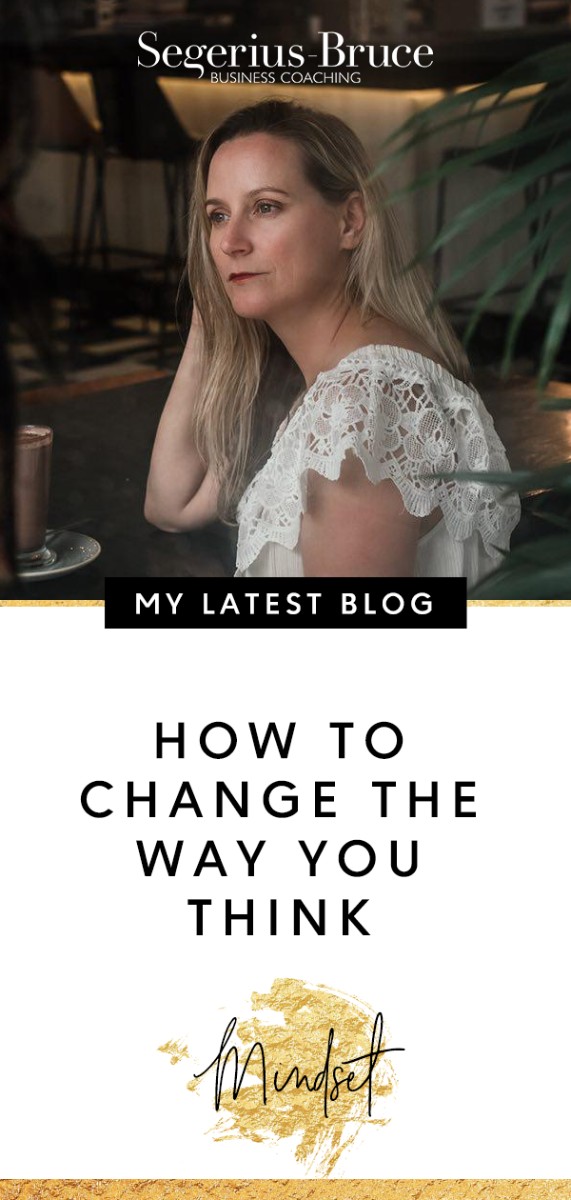
You’ve probably heard that it’s possible to shape the way you think through forming new habits, saying affirmations out loud or challenging yourself by playing Sudoku. In fact, scientists have already proven that your brain is changed by new experiences every day. This form of shaping and moulding is referred to as neural plasticity – the paths in your brain are not as unchanging as you think.
So what does this mean for you?
By understanding a simplified version of neuroscience, you can significantly alter your life by understanding how to change your habits, increase happiness, and improve your health. In practice, by engaging in activities that are positive, you activate a different part of your brain (the prefrontal cortex for the nerds). If you continue to feel happy, this part of your brain strengthens and solidifies the neural pathways making it easier to replicate that feeling of happiness. Research in neural plasticity has really opened doors for people to experience lasting happiness.
Remember that you’re a human being and it’s normal to feel a range of emotions. If you aim to feel good 50% of the time you’re on the right track.
Your Brain Explained with Science
Now, before you can change the way you think, it’s important to understand how your brain works at a general level.
Your brain consists of billions (100 billion approximately) of neurons that are in close proximity and send signals to each other using neurotransmitters. These signals dictate the thoughts and feelings we have, and why we experience emotions in relation to things around us. This is why the smell of freshly cut grass, evokes special memories or strong emotions, for no apparent reason.
Your brain tries to do what’s best for you but can misguide you. Perhaps you’re really hard on yourself for forgetting a minor detail on a project, even though nobody noticed; or you may seek pleasure by over-indulging in your favourite chocolate, because your brain tricks you into thinking that’s what makes you happy. These are both results of the neurotransmitters working in your brain.
There are many types of neurotransmitters, but I want to discuss the 5 that I deem most important with regards to how you think.
1. Dopamine
You’ve probably heard of dopamine before and how it relates to addictions. It definitely plays a part in that, but dopamine can also be used in a positive way. Dopamine is a neurotransmitter that energizes us to seek reward. It feels good when we experience a dopamine rush, because it creates a sense of power and motivation. So when you achieve a goal or a milestone, you get a little buzz because of dopamine.
Dopamine doesn’t only work on large goals, it is the driving force when it comes to smaller goals such as eating. When you get hungry, you anticipate the reward (which is whatever your favourite meal is) and dopamine is released. This dopamine drives you to go to the fridge and warm-up some leftover pasta from the day before. We’re motivated because our brain is telling us we want it.
2. Serotonin
People who suffered from depression may be familiar with this neurotransmitter. In fact, many antidepressants attempt to increase serotonin, to try to make a person feel happier. Serotonin has many roles to play in the body, but the one I’m going to discuss here has to do with social standing. Humans are social creatures, we spend a lot of time figuring out where we might fit in relation to others around us. Our levels of serotonin are directly related to where we perceive ourselves to fit into the social hierarchy around us.
All humans have competitive urges which is why we’re constantly comparing ourselves to the people around us. It isn’t simply about making a comparison. The amount of rise or fall of serotonin in your brain is dependant on the answer. When we feel we are lower in the hierarchy, when think we lack status, we start feeling anxious. The opposite is true as well. When we receive admiration, we feel more appreciated in the world, which is when we feel serotonin flowing.
3. Oxytocin
This is known as the love chemical but it isn’t related to lust. Oxytocin is about the connection we feel with the people closest to us. You feel this when you’re playing with your child in the garden or are speaking to your parents who you haven’t connected with in some time. Oxytocin might sound similar to serotonin but it isn’t about seeking approval, rather it’s about gaining trust and creating a deep connection.
Oxytocin was imperative when physical survival relied on us being physically close together. Now with the rise of technology, distance is no longer an issue. You can feel a social connection with a group of people using Facebook or Whatsapp. But there’s a problem with seeking out oxytocin. People go along with peer pressure to feel as though they belong because they believe that being with other people is better than being alone and isolated.
4. Endorphins
These neurotransmitters are what the body uses to fight pain. In addition to fighting pain, we experience endorphins during exercise, laughter and sex. Its role is to protect our bodies from what our mind thinks is going to harm us. The best way to feel endorphins right now is to go out for a run and push your body further than it usually goes. Your endorphins will kick in as it tricks your brain into masking your body’s pain in order to continue. This usually dampens the pain, until the next morning when you can feel all your muscles are sore.
The issue with endorphins is when we actively seek it. Many people decide to inflict physical pain on themselves in order to feel the rush of endorphins protecting them. They might feel emotional pain from anxiety or fear, and find outlets to release their emotional pain through the physical realm, because of the numbing role of endorphins which makes them feel better.
5. Cortisol
The last neurotransmitter is Cortisol. This is probably the most talked about one because it is known as the stress chemical. It’s similar to dopamine but rather than anticipating a reward, you’re anticipating pain. It is important to note that cortisol isn’t raised when you actually feel pain, but it’s the thought of feeling that pain that raises the levels. The same goes for dopamine.
Most of the time people experience stress for no reason as their body tricks them into believing that something is going to be painful. This made sense in the past when people had to worry about lions coming to eat them, but it’s a bit tough to justify speaking on stage as painful. Your brain misleads you when there is seldom real danger.
How to Use Your Mind To Change Your Brain
Changing the way you think requires taking control of how these neurotransmitters are triggered. Mental activity strengthens the neural pathways in your brain. Every thought you think, and feeling you feel, solidifies the paths in your brain. To oversimplify the concept, if you focus on being happy, you strengthen the happiness pathway. Neural pathways define how we perceive the world and create our habits of thinking, feeling, and acting across our relationships, money, career and lifestyle. If you focus on being happy, you strengthen the happiness pathway.
When you keep practising creating new pathways, older habits start to weaken and break down. One of the best methods I’ve found for practicing creating new pathways is through affirmations. Particularly focusing on affirmations that are tied to feelings related to your goals. Carrying on the way you are, will lead you on the same path!
Now, in theory, it’s easy to simply say let’s melt down the neural plastic and re-mould it to create positive habits that don’t induce anxiety. But you’ve been on the journey of self-improvement, you know how difficult it is to do this. So why is it so difficult?
Path of Least Resistance
People live their lives on autopilot most of the time. This has to do with the fact that your neural pathways work under the law of least effort. A worn down path is much easier to follow than venturing into the thickets of long grass to create a new one. Therefore, when a decision is made to be happy or sad, the path that seems most natural will be taken. To overcome this, there is a conscious framework to help determine the best path for you.
The Model
The model (or CTFAR) is a model developed by Brooke Castillo that helps overcome the way we make decisions around us. It helps us look consciously at how we process issues before we deal with them. This allows us to create positive habits. Below are the steps.
Your circumstances can trigger thoughts, your thoughts cause your feelings, feelings affect the actions you take and your actions determine your results.

Circumstance
Circumstances are things you have no control over. The things that happen to or around you. Other people (you may have influence but no control over others), what people say or do, your entire past, the weather, your children’s illness, your financial situation. Circumstances are facts. Things that can be proven in a court of law. Circumstance triggers the next phase – Thoughts.
Eg: You receive an email from a client complaining about your product.
Thoughts
Thoughts come after the circumstance and are a single sentence in your mind. We often get circumstances and thoughts muddled up. We tend to think that our thoughts about a circumstance is fact, but it’s just a thought, therefore it is a choice. Our thoughts are just that – OURS. Circumstances don’t have any emotion attached to them, they are neutral facts. It’s only when we attach our thoughts to the situation, that we then experience a Feeling.
Eg: “This person hates my product”
Feelings
Feelings are a one-word description given to your current emotional state. It can be that you’re happy, sad, glad or mad. What leads to your feelings are your thoughts. If you have a certain thought about the situation, you tend to start feeling something about it.
Eg: Anxiety
Actions
Once you feel something, you make a decision to act on it. This is pretty straight-forward. You either take action, react in some way, or take no action at all. Your feelings are a huge driving force as to why you act, but also how you act. If you tackle a task when you’re happy, the process is a lot more fun!
Eg: Type a response email to the client apologising and deprecating yourself
Results
After every action comes the result, the outcome of your behaviour. The result that you receive from your action, is always going to prove the initial thought. So controlling your thoughts has a direct effect on the results you get.
Eg: Client returns the product and leaves a bad review on your website.
Let’s have a look at the example above if we change the thought!
Circumstance: You receive an email from a client complaining about your product.
Thought: “They reached out to me to help”
Feeling: Grateful
Action: Send an email to the client assisting with their problem
Result: Client buys another product, leaves a great review and tells their friends about how well you handled the issue.
As you can see – by changing the thought we had in reaction to the circumstance, we have changed the result. Our thoughts are powerful, and this is why we need to be mindful of what we are thinking. This is also why it’s so important to include your feelings in your affirmations – they affect your actions!
Keeping Your Brain Agile
The way we think usually sets in fully around the age of 25. Years and years of repeating thoughts and habits fueled by the neurotransmitter’s rise and fall have created very clear pathways in our brains. This doesn’t mean that you can’t change your mind now. But by understanding the basics of how a brain works and the steps towards a mindful approach, you can rewire the pathways of your brain by focusing on your thoughts. Doing this is intensive work, and requires a lot of mental energy. Just as you don’t suddenly decide to start running marathons, when you’ve been on your couch for years; you need to start with gradual changes that take a lot of effort in the beginning, but as those new habits become part of who you are, you can increase the areas that you focus on.
Let me know in the comments what your main affirmation is this week – specifically relating to thoughts and feelings!

2 Comments

Chanelle Segerius-Bruce
Chanelle is a business coach/consultant and personal branding specialist with over 20 years of experience. She's been featured in Forbes, Thrive Global, Stylist Magazine and COACH Magazine. She runs a global training business and works with women helping them launch, grow and scale their online businesses and create a freedom-based life through entrepreneurship.

Thanks Chanelle for this thoughtful and very helpful post. It is always good to be reminded that we are in control of our thoughts and ultimately our actions and results. Keeping those pathways clear of all negativity, fear and anxiety and allowing the happy, positive and loving thoughts to have easy access to our mind!
My affirmation for this week is : I AM CLEAR & DETERMINED TO MAINTAIN A POSITIVE MINDSET AND ALLOW THE UNIVERSE TO WORK IT’S MAGIC THROUGH ME!
Peace & Love
Susan
Lovely blog post – thanks! I’m currently helping a Media Tech business with agile work flow practices. The CTFAR model is one I will share in our next stand up. It’s so easy to get annoyed with a client email or phone call but a simple reflection to the CTFAR model can turn a potential nasty outcome into a fresh, unexpected & positive one!